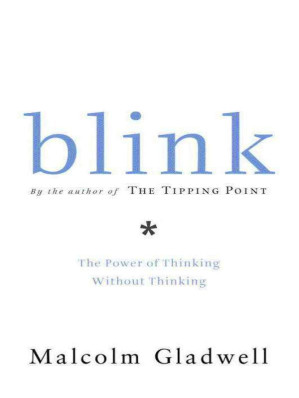Insights from Blink: The Power of Thinking Without Thinking
In a world where decisions are often made in the blink of an eye, understanding the power of these snap judgments is crucial. Malcolm Gladwell's "Blink: The Power of Thinking Without Thinking" delves into the science and psychology behind these rapid decisions, revealing how they can be both incredibly accurate and dangerously flawed. This book is a fascinating exploration of the unconscious mind and its role in our everyday choices.

Summary
Part I: The Theory of Thin Slices
Chapter 1: The Theory of Thin Slices: How a Little Bit of Knowledge Goes a Long Way
Gladwell introduces the concept of "thin-slicing," the ability to make quick decisions with minimal information. He illustrates this with the story of the Getty kouros, a statue that experts instinctively knew was a fake within moments, despite extensive scientific evidence to the contrary.
Chapter 2: The Locked Door: The Secret Life of Snap Decisions
This chapter explores the unconscious mind and how it influences our snap judgments. Gladwell discusses the Iowa Gambling Task experiment, demonstrating that our brains can detect patterns and make decisions long before we are consciously aware of them.
Part II: The Power of the Unconscious
Chapter 3: The Warren Harding Error: Why We Fall for Tall, Dark, and Handsome Men
Gladwell examines how our unconscious biases can lead to poor decisions. He uses the example of Warren Harding, whose presidential election win was largely influenced by his appealing looks rather than his abilities.
Chapter 4: Paul Van Riper’s Big Victory: Creating Structure for Spontaneity
This chapter highlights how experienced professionals, like military commander Paul Van Riper, rely on instinct and rapid cognition in high-pressure situations, often outperforming those who overanalyze.
Part III: The Limits of Snap Judgments
Chapter 5: Kenna’s Dilemma: The Right and Wrong Way to Ask People What They Want
Gladwell discusses how traditional market research failed musician Kenna, whose unique style did not fit into conventional categories. This chapter underscores the limitations of snap judgments in understanding complex preferences.
Chapter 6: Seven Seconds in the Bronx: The Delicate Art of Mind Reading
In this chapter, Gladwell delves into the tragic case of Amadou Diallo, illustrating how snap judgments can have dire consequences, particularly in high-stress situations involving law enforcement.
Key Takeaways
- Thin-Slicing: The concept of making quick, informed decisions based on limited information.
- Unconscious Bias: How our snap judgments are influenced by deep-seated biases and stereotypes.
- Instinctive Expertise: The power of experience and intuition in making effective decisions under pressure.
- Limits of Intuition: Recognising when snap judgments can lead us astray, especially in complex or unfamiliar situations.
Conclusion
"Blink: The Power of Thinking Without Thinking" by Malcolm Gladwell offers a compelling look into the power and pitfalls of snap judgments. Through a series of captivating stories and scientific studies, Gladwell shows us that while our unconscious mind can be a powerful tool, it is not infallible. Understanding when to trust our instincts and when to rely on more deliberate decision-making processes is key to harnessing the full potential of our cognitive abilities.